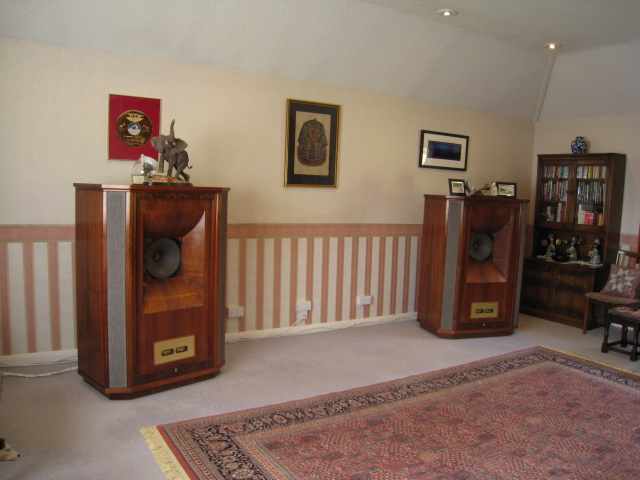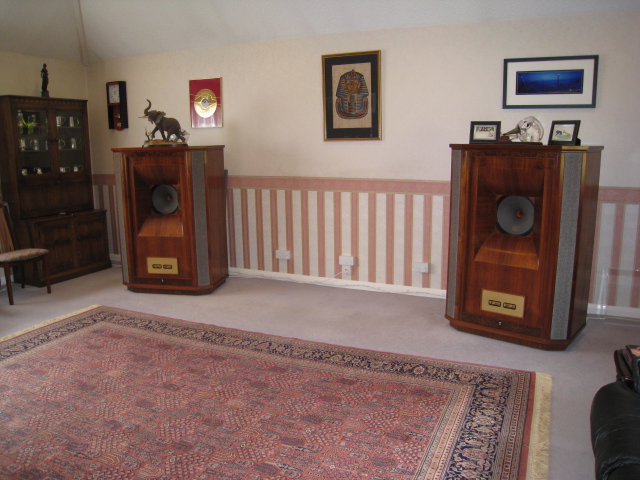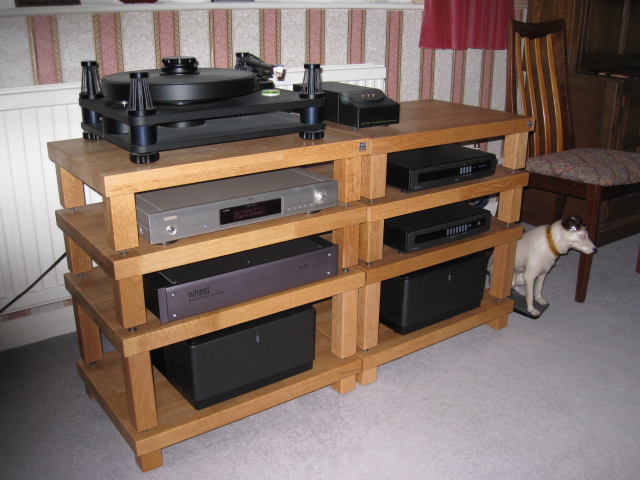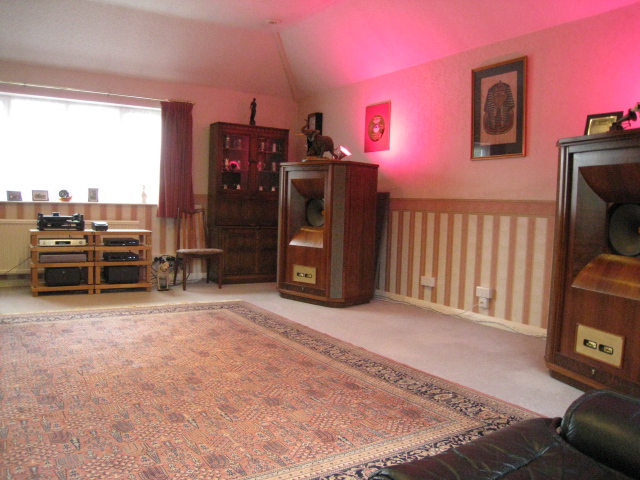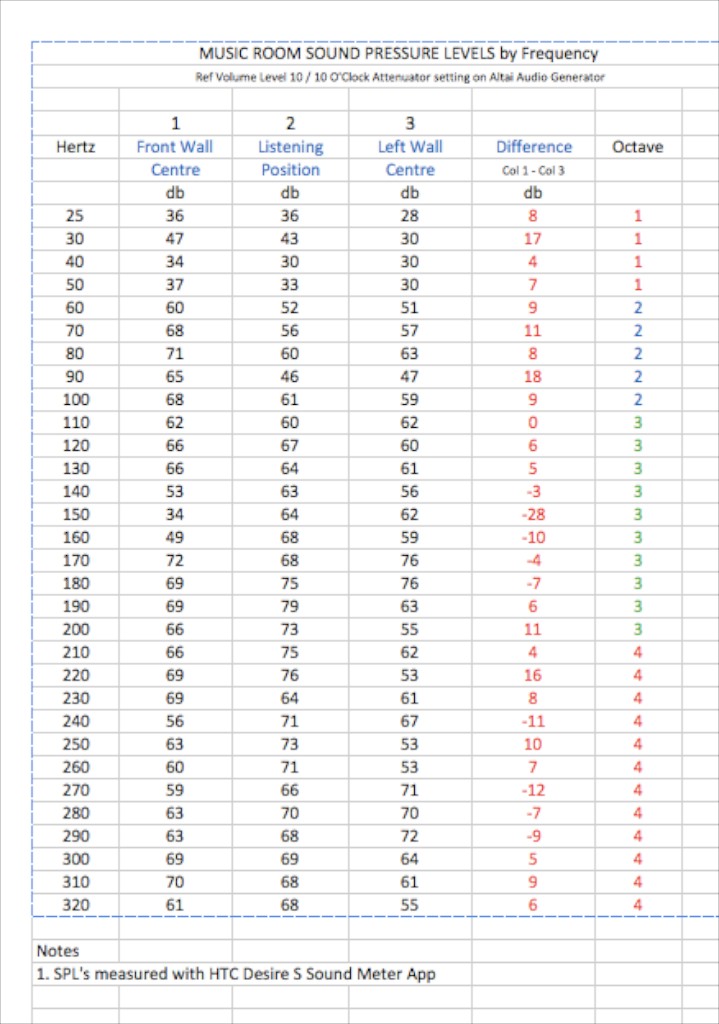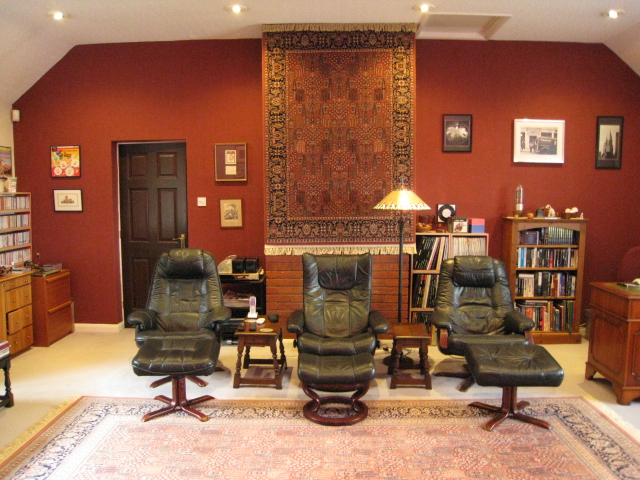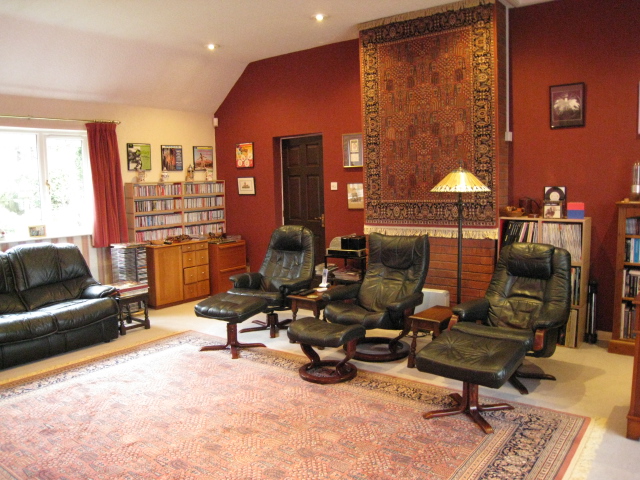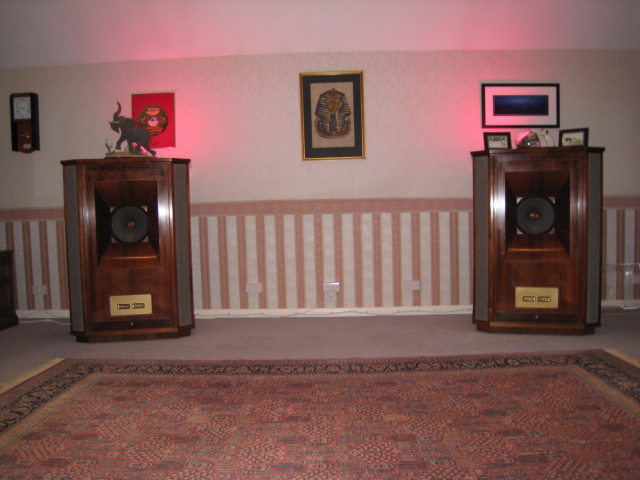I got a nice email from David King, telling me about some of his experiments in setting up his Westminster Royal loudspeakers (below), which I thought would be valuable reading to all of you here at Jeff's Place:
"Since I was last in touch I have been doing a whole series of experiments based around Jim Smith’s book Get Better Sound which I thought may be of interest. I know that this is not a new topic and that various individuals including Jim himself have contributed to the blog on this subject, but the work I have done is effectively a case study on my experiences with the approach which may have some interest for your readers particularly any who have not explored this subject for themselves and who run Westminster Royals."
"It is written in the form of a letter to Noel Keywood who is Editor of Hi-Fi World magazine in the UK which was published in the April 2014 issue."
Letter to Noel Keywood, Editor of Hi-Fi World published in April 2014 Edition
Dear Noel,
Firstly, thank you for your column in the February 2014 edition which I found very interesting indeed. The reason that it struck a chord with me was that it confirmed my conclusions, based on some of my recent experiments, that the room is by far the most important element impacting the performance any hi-fi system, a fact that your experience with Tannoy Yorkminsters would seem to support.
Before launching into detail it might be helpful for me to share a few details of my system and room. I use the Yorkminsters’ big brother, the Tannoy Westminster Royal HE (you really would not want to carry these up two flights of stairs!) in a dedicated music room of 4500 cubic feet (23ft x 20ft x10ft). The system is powered by Quad amplification, Elite Pre & Elite QMP Monoblock power amplifiers, which I bought recently having read Jon Myles review and having borrowed a pair from Mike Statham at Zouch Audio for extended trial. The front end is the Quad Elite CDP and an SME Model 20/3A. At the beginning of this experiment the speakers were 10 feet apart with the electronics between them about 12 inches behind the front line of the speakers.
I have long been aware of the importance of setting up equipment properly, but only very recently have I gained an insight as to what this really entails. True enlightenment came about quite by accident. It started just over a year ago when I came across a very good set up manual from the USA called ‘Get Better Sound’ by Jim Smith which I have been gradually working my way through. Jim Smith is an industry professional who has worked in both audio manufacturing and retail who, over 35 years, has set up more than 3000 systems. The book is a distillation of this experience and it has some penetrating insights. Jim talks about the importance of getting your system to work with the room rather than against it which he calls ‘playing the room’. It is essentially about how to get the best from your existing equipment and room without spending huge amounts of cash on new kit. Smith’s methodology is aimed at removing or neutralising the pernicious influence of room boundaries and the standing waves that reside there. You clearly managed this beautifully with the Yorkminsters in your office listening environment but were less successful in your lounge at home with its domestic constraints.
My initial work from ‘Get Better Sound’ involved precision speaker set up, using lasers, to get the tonal balance right and selecting the listening position to get the ‘best bass’. Best bass was defined as the place in the room where the bass is most even and provides good extension. This is not necessarily where it is loudest. Jim asserts that you will never be totally happy with your sound unless the bass is right. Implementation was time consuming and onerous but ultimately very successful taking about a month though it took another 3 months for my elbows to recover from the trauma of moving the massively heavy speakers around.
Now to what was the really interesting and surprising part; when the Quad QMP power amplifiers arrived they were a tight fit in my Podium Reference racks and so I ordered some longer legs to give the amplifiers a bit more breathing space. When I fitted them, I decided that I would also move the racks 2 inches forward from the front wall to allow a little more room for accessing cables and the rear of the kit. When I reassembled the system it sounded excellent apart from the fact that the bottom octave of the bass had taken a vacation. It simply wasn’t there anymore. There were clearly two changes that had taken place. Firstly the longer legs on the stands and secondly moving the racks forward by a massive 2 inches. I reversed the process, changing the legs back and repositioning the racks to their former position and the status quo was miraculously restored and once again the earth moved for me appropriately as the music demanded. On substituting the longer legs in this position I found that the sound became leaner and less bass heavy but with greater clarity in midrange and treble. I was puzzled by this so I decide to have a look at the manual and see whether Jim Smith had anything to say about this phenomenon, and sure enough he did.
Jim’s assertion is that positioning the kit between the loudspeakers is the worst possible position in the room for it. The reason for this (he says) is the presence of very heavy standing waves between the speakers in the critical 20 Hz - 300 Hz region which in turn set up acoustic feedback which has a devastating effect on performance, particularly of the source equipment, but also the presence of furniture and equipment between the speakers results in sound being reflected of the hardware to the listening position but out of phase causing smearing and loss of detail. He says that if you have to have the kit between the speakers it should be as close to the wall as possible. However the best solution by far is to position the equipment on one of the side walls as close to the middle as possible this being the position where bass and standing waves tend to be minimised.
It was clear that this merited further investigation so to test it I moved the kit as close to the front wall as I could (another massive 2 inches). Again I was astonished by the results. I noticed substantial improvements in clarity and definition throughout the frequency range with a very worthwhile improvement in bass quality and extension and treble sweetness. The other really noticeable feature was the improved dynamics. The changes were not subtle. In my view they were certainly greater than could have been achieved with expensive equipment upgrades. However, though much improved, all was still not quite right. On certain cd’s and records there seemed to be a very slight distortion which I thought could be on the recordings or mistracking in the case of LP. There was also a slight but noticeable bloating or clouding in the upper bass region which had the effect of making the sound very slightly woolly and ponderous on some recordings. It was however noticeable that the speakers were starting to really breathe effortlessly with the horns driving the air in the room much more effectively. At the start I did not expect these changes and I certainly had not been listening for them. It was pure chance that I noticed what was happening. It would be nice to say that it was all part of a cunning plan. Sadly it was not.
However having achieved so much with such minor changes I was hungry for more so I started to think about moving the kit to the side wall as Jim suggested. The issue with this was one of cost. It would require the purchase of a 10m pair of speaker cables and the installation of a new clean power supply. I installed a dedicated ring main a few years ago for the hi-fi and was not about to lose the advantage it gave me. In total these changes would involve expenditure of £800 - £1000 with no guarantee of success. The next question therefore was could I get a better handle on the likely benefits without spending the cash to prove the point?
I talked it over with a friend who suggested that it might be possible to do some measurements in my room to test the theory and by a very happy chance he had an audio signal generator I could borrow. I accepted his offer not having a clue as to how I would do it, having never done anything like it before. He delivered the signal generator and I sat and scratched my head for a while about how to conduct some useful measurements. In the end I decided to measure the acoustic performance of my room in three positions by measuring the SPL’s at 10 Hz intervals between 25 Hz and 320 Hz in each position using a constant level signal. There was, I determined, very little sonic activity below about 23 Hz in my music room so 25 Hz would be a reasonable starting frequency. The positions I selected for measurement were:
- Front Wall Centre (current location of the electronics)
- Listening Position
- Left Side Wall Centre (possible future location of the electronics)
I do not own an SPL meter so I used a Sound Meter App on my mobile phone. Obviously not the best way of doing it and probably not accurate but at least I thought the results would be consistent and hopefully therefore useful for my purpose.
I had always believed that my room was reasonable benign acoustically. Actually it proved to be anything but benign. The results were very surprising indeed. In the critical 25 Hz-100 Hz bass region the front wall position showed between +3db and +18db difference in sound energy levels when compared to the side wall position and certainly more than enough to scramble the performance of my CD player and record deck I judged. Fortuitously it also showed that my listening position, selected by ear only, was really not too bad, though there were a few issues in the 170 Hz - 220 Hz region. I have attached a speadsheet showing the results which you might find interesting.
The positive result of this rather amateurish experiment was that it gave me the confidence to borrow a set of 10m speaker cables from Mike Statham and try re-locating my equipment. Initially this was done with a temporary mains supply using two poor quality extension leads joined together. This was obviously sub-optimal but nonetheless good enough hopefully to enable me to make the final decision. The benefits were once again astonishing. Huge improvements in definition and dynamics as if a couple of heavy blankets had been removed from the front of the speakers. Dynamics were awesome. Immediately following the change I was slightly concerned about a lack of bass. Actually what I was hearing, or more accurately not hearing, was the clouding and slight colouration that had previously been present in the upper bass region. When serious bass was present in the music such as Felix Hell playing the organ of First Plymouth Congregational Church, Lincoln, Nebraska, a stunning recording, (Reference Recordings RR101) it made itself known in the most thunderous way leaving me with a stupid grin on my face and my chest cavity pulsating in sympathy with the powerful 32 foot pedal notes. Probably the most impressive effect of all was the improved air and space and the beautiful way the sound now decayed in large buildings which made unaccompanied vocal and choral music a delight.
Before doing this work I had no idea how insidiously standing waves were impacting the performance of my hi-fi system and more importantly on my enjoyment of my music. Nor had I any real perception of how tiny the set up differences were between mediocre and exceptional performance. It has been a genuine learning experience for me and having achieved huge benefits with a poor mains set up I cannot wait to get my friendly local electrician to extend the existing clean power supply with six MK Logic switchless sockets so that all equipment can be plugged directly into the power with no extension leads. This will complete the project and I am confident that it will yield further worthwhile performance improvements, a positively mouth-watering prospect!
The moral of this story is that even when you have been a music and audio enthusiast for as long as I have you probably do not have all the answers and in my case I am only now beginning to understand what some of the questions are! It reminds me of my work as a management consultant where I learned very quickly that I had no hope of solving a problem unless I first correctly diagnosed its cause. In the world of audio it’s easy to treat symptoms rather than the underlying problems resulting in much wasted time and money and huge frustration without ever making any real progress.
Thanks for a great magazine.
Kind regards,
David
David King
Northampton, England
Many thanks to David for sharing his experiments in system setup with us!




